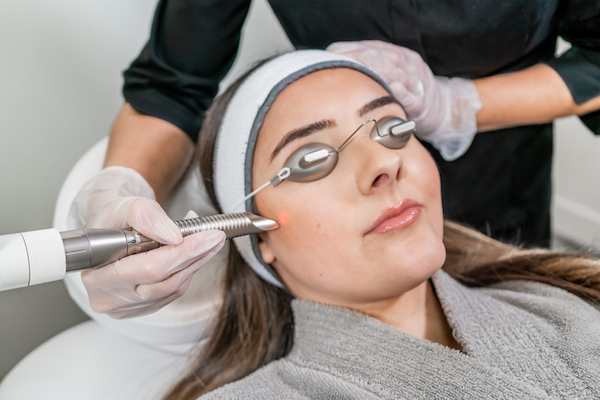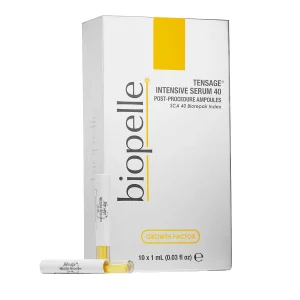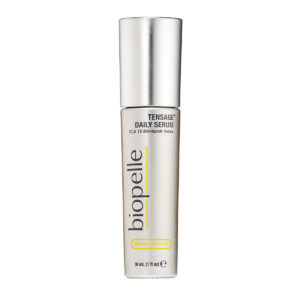Skincare professionals widely agree that the right post-procedure skin care can lead to better results, faster healing and improved outcomes. Often, procedures like microneedling or laser resurfacing can leave the skin inflamed, red and irritated. While these procedures work to improve the appearance of the skin, they purposefully create wounds to promote a response in the skin, which means gentle care and treatment is vital.

Most Popular Procedures and How to Use Post-Procedure Skincare
Talking with your dermatologist, there are a wide variety of procedures to improve the skin’s appearance, slow visible signs of aging and improve photodamage. Below are some common procedures and how you should care for your skin post-procedure.
Microneedling
Microneedling is performed in-office using a device with numerous fine needles attached to it. Once activated, the device causes the needles to oscillate vertically at a very high frequency, causing multiple micropuncture wounds on the skin. The depth and speed of the punctures can be controlled precisely by the operator.
Microneedling can help promote collagen production which results in:
- Reduced appearance of fine lines and wrinkles
- Reduced appearance of scar tissue
- Reduced appearance of hyperpigmentation from sun damage
- Improved skin firmness
- Reduced appearance of pore size and depth
Microneedling is a popular choice for cosmetic dermatology because it is less invasive and requires less downtime than other procedures, such as laser resurfacing.
Best Products for Microneedling
Another benefit of microneedling is it can make the skin more receptive to products. Dermatologists frequently use Tensage Intensive Serum 40 to microneedle directly into the skin, delivering growth factor benefits deeper into the dermis. This helps promote healing in the skin. Tensage Intensive Serum 40 is frequently recommended post-procedure to help reduce downtime and visibly improve redness and swelling once the skin has re-epithelialized.
After procedures, it’s important to focus on gentle, nourishing products. Cleanse with a gentle cleanser like the Tensage Gentle Gel Cleanser and be sure to moisturize with a non-comedogenic moisturizer such as Tensage Soothing Cream Moisturizer.
Harsher products, such as retinol and vitamin C serum, should be avoided for the first 48 hours, minimum, after microneedling. After completing your regimen of Tensage Intensive Serum 40, growth factor products that promote healing, such as Tensage Daily Serum can help to maintain results and optimize outcomes.
Chemical Peels
Chemical peels are used to remove dead or damaged skin cells and reveal healthier skin underneath. The come in three strengths and results will vary based on the severity of your peel.
- Superficial peels use mild acids like alpha-hydroxy acid to gently exfoliate. These treatments only penetrate the outermost layer of skin and downtime is minimal.
- Medium peels use trichloroacetic or glycolic acid to reach the middle and outer layer of skills. This makes it more effective for removing damaged skin cells. Downtime can take more than a week.
- Deep peels, fully penetrate the middle layer of the skin to remove damaged skin cells. These peels often use phenol or tricholoracetic acid and downtime can last multiple weeks with redness, inflammation and irritation.
Chemical peels can improve the appearance of:
- Wrinkles and fine lines
- Sun damage
- Acne scars
- Hyperpigmentation
- Scars
- Melasma
- Uneven skin tone or redness
Best Post-Procedure Products for Chemical Peels
The level of chemical peel you receive will help determine which products are best to use post-procedure. Like most cosmetic dermatology procedures, you’ll want to treat your skin gently and be sure to use sunscreen and avoid too much UV exposure. Products such as retinol and vitamin C, again, should be avoided.
For medium to deep chemical peels, growth factor products can help reduce swelling and wound appearances, leading to shorter downtime.
Shop now: Tensage Intensive Serum 40
Laser Resurfacing
Laser skin resurfacing can use a variety of different laser types to remove layers of skin with precision. The new skin cells that form during healing give the skin a tighter, younger-looking surface.
There are two main categories of laser used in these treatments:
- Ablative lasers remove the thin outer layer of skin and heats the underlying skin, which helps stimulate the growth of new collagen fibers. As the epidermis heals and regrows, the treated area may appear smoother and tighter. Types of ablative treatments include the carbon dioxide (CO2) laser, the erbium laser and combination systems.
- Nonablative lasers are non-wounding lasers that stimulate collagen growth, which over time helps improve skin tone and texture. This approach can be done with various types of lasers as well as intense pulsed light (IPL) devices. Nonablative laser resurfacing is less invasive and requires minimal recovery time than does ablative laser resurfacing though it is less effective.
Laser resurfacing can help improve the appearance of:
- Fine wrinkles
- Age spots
- Uneven skin tone or texture
- Sun-damaged skin
- Mild to moderate acne scars
Best Products for after Laser Treatments
Depending on your treatment there is likely to be some redness and swelling for the first few days to weeks depending on the level of intensity. Keeping the skin cleansed and moisturized with a non-irritating lotion or cream can increase a patient’s comfort, especially if they experience dryness and peeling. This can be a great time to apply a growth factor product that can help hasten re-epithelialization, restore the skin barrier, and minimize downtime.
Dr. Joel L. Cohen of Denver, Colorado, works with heavy full-field erbium resurfacing as well as fractional resurfacing—both erbium and Co2 lasers.
“When it comes to peri-procedure regimens with this laser procedure, I like to have patients use Tensage daily growth factor serum in the morning before sunscreen is applied for the weeks prior to the procedure — to try to turn-on and upregulate the fatigued collagen-producing cells (fibroblasts),” Cohen said. “In the evenings leading up to the big laser procedure, I like them to use a retinoid like Retriderm Mild or if post-menopausal then Emepelle night cream to try to turn-down those pathways and enzymes that degrade collagen.”
When it comes to post-procedure skincare, he recommends Tensage Intensive Serum 40 Ampoules “as they are literally packed with high-concentration growth factors to try to help with both wound-healing recovery as well as collagen production.”
Shop now: Tensage Intensive Serum 40
Biopelle’s Award-Winning Post-Procedure Skincare
Biopelle is an award-winning brand for post-procedure skincare. The 2020 Kline U.S. Perception & Satisfaction Study1 named Biopelle a Top Ranked Brand for post-procedure care.2 Discover our entire line of post-procedure skincare products. Shop now.
- These claims are based on a survey conducted by Kline & Company based on a sample size of 250 dispensing-physicians of which 13% of respondents cited Biopelle as their leading brand
- This result was based on the combination of Biopelle and Tensage2020



